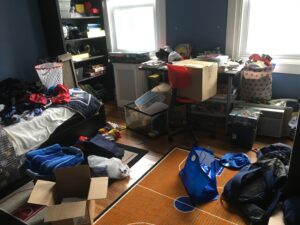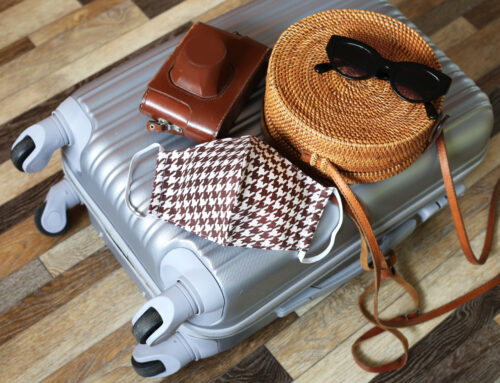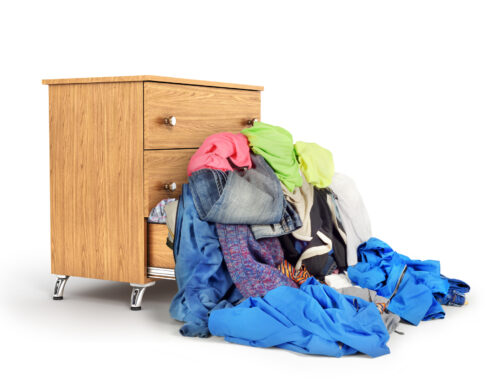 So your college kid is coming home for summer break with a car load of “stuff” in tow. That organized checklist you created to make sure junior had everything he needed for a successful college career has now multiplied and is coming back to haunt you for the summer. The problem may be compounded if you decided to re-purpose his room while he was away; after all he does need a place to sleep when he comes home. He may have moved out, but more often than not he still considers that to be his room on a psychological and emotional level. So where do you put all that stuff? What do you do with that bean bag chair, microwave, mini refrigerator and giant blow up Corona bottle?
So your college kid is coming home for summer break with a car load of “stuff” in tow. That organized checklist you created to make sure junior had everything he needed for a successful college career has now multiplied and is coming back to haunt you for the summer. The problem may be compounded if you decided to re-purpose his room while he was away; after all he does need a place to sleep when he comes home. He may have moved out, but more often than not he still considers that to be his room on a psychological and emotional level. So where do you put all that stuff? What do you do with that bean bag chair, microwave, mini refrigerator and giant blow up Corona bottle?
Well, to be honest, it depends…if he packs up all of his belongings in containers AND you have space available in your garage, basement or attic then the answer is relatively easy and you simply need to store it until it’s time to head back to school; however, if you don’t have the storage room or if he randomly tosses it all in his car in garbage bags or worse yet, no containers at all, then rest assured all that stuff will end up somewhere in your home scattered or piled about.
Pre-plan
The best way to avoid the onslaught of stuff coming into the home is to approach the problem before it happens and have a discussion with your college student before they pack up to come home. If you have re-purposed their room then make sure they know ahead of time to avoid the shock and disappointment, and then work with them to devise a plan for their belongings when they come home. When it comes to packing up any space a little pre-planning goes a long way. First decide what space your student will occupy when he returns home. Next discuss how to store any items that won’t fit in the provided space—see below for storage options. You may even want to limit your student to a certain number of suitcases or boxes that will be allowed in the space for the summer. This will help them learn to plan better in the future and help you control the clutter coming into the home. Finally, talk to them about how they plan to pack—see below for packing tips. Limiting them to 2 suitcases and 3 boxes is not the same as 8 garbage bags full of stuff, so be clear about your expectations to avoid any misunderstandings and hard feelings.
How to Pack for a Move
The most efficient way to pack for a move is to sort all items into categories. For example they would gather all their pens, pencils and markers together in one category and all their notebooks, pads and Post It Notes in a separate category. The same process would apply to all the rest of their belongings. The process allows them to quickly see if they have an over abundance in any category so they can easily decide what to keep, toss or donate. Once they have everything sorted, categorized and purged they can begin the process of packing.
I recommend packing the smaller items in banker’s boxes. They are large enough to fit a fair amount of items and small enough so they aren’t too heavy when fully packed. In addition they are reasonably priced, have handles and are easy to label. You can even go green by purchasing used banker’s boxes at Box It. If water or moisture damage is a concern then use plastic totes. I suggest using clear, medium sized totes so the items inside are easily identifiable and the container is not too large to carry when fully packed. Larger, oddly shaped items like bean bag chairs can be stored in large contractor garbage bags to protect items from dirt and water damage.
If your student is living across country and has more than a car load of items to tote home, then it might more prudent to look into renting an offsite storage unit for the summer. This way he can simply pack a couple of bags and drive or fly home for the summer. There are some great options available, such as CollegeBoxes or DoortoDoor that cater to college students and even deliver the boxes to their dorm and pick them up after they are packed.
If a storage unit is not in the budget and junior has too many items to lug home you can consider donating or using Freecycle to downsize any unnecessary or unwanted items before loading up the car for home. The best way to load a car for the greatest use of space is to load the larger inflexible items first, followed by smaller inflexible items, then items that can be squeezed in the odd sized empty spaces. Clothing can be packed into any suitcases you have or if the suitcases take up too much room you can layer the suitcases one inside the other and use garbage bags to pack your clothes. This way you can squeeze the clothes into all the unused spaces left in your car.






